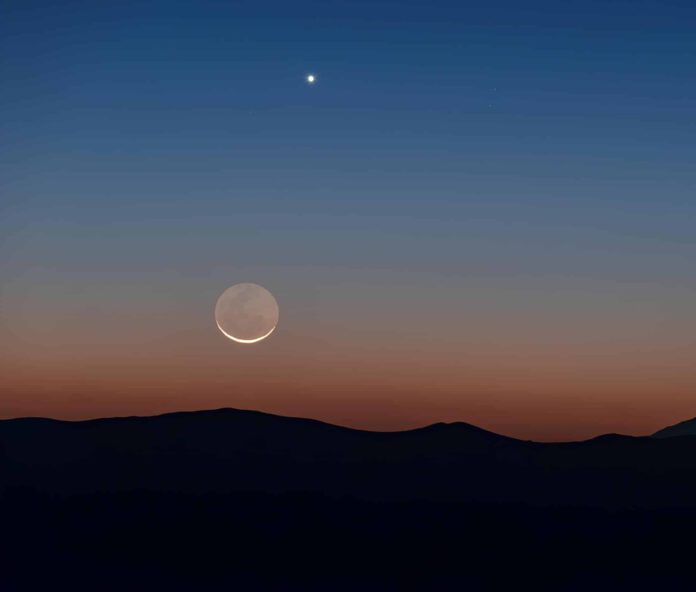
If you look up at the moon at eight o’clock tomorrow morning, you will notice a bright “star” next to it. However, this ‘star’ isn’t what it seems; it’s the planet Venus.
Venus: A Bright Neighbor in The Sky
Venus is situated just four degrees north of the moon. With a magnitude of -4.2, Earth’s neighboring planet is the brightest spot in the night sky. For comparison, Sirius – the brightest star – has a magnitude of -1.46, which is somewhat less bright.
Especially on Saturday morning, it is worthwhile to observe the moon since it is fifteen percent illuminated. A full moon shines much brighter and this can present a less striking contrast with nearby planets. For instance, Mercury is barely visible next to a full moon. If you want to spot Venus and the moon, you need to be quick, as the sun rises at 8:39 the same morning.
Thin Crescent Moon Appearing Soon
It’s certainly worth keeping an eye on the moon in the coming days. On the morning of December 11, the crescent moon will be very thin, with only 3.3% illuminated since it’s nearing the new moon phase. You can view this slim crescent just before sunrise. When the new moon arrives on Wednesday, it turns the dark side towards Earth.
Is it a Planet or a Star?
There is a simple ‘check’ to identify whether you are looking at a planet or a star. Does the spot twinkle? If so, you are dealing with a star. A star is so small that its light is refracted due to turbulence in the earth’s atmosphere. A planet does not twinkle because a planet’s disk is larger. In addition, planets like Venus and Jupiter are often brighter than stars. The exceptions are Uranus and Neptune, but you would need a telescope to spot these planets. If you have a keen eye, pay close attention to the color of the planet. Mars appears somewhat redder, Venus is yellowish, and Jupiter orange. Especially with binoculars or a telescope, the differences are easier to spot.
Venus: Farther Away Than The Sun
If you look up at Venus early tomorrow morning, the second planet of the solar system will be 153 million kilometers away from Earth. This is a bit farther than the distance from Earth to the sun, which is 150 million kilometers. We can see Venus clearly only when the planet is next to the sun (as seen from Earth). Distances will continue to increase over time, which means Venus will disappear from sight because the sun will be in the way. If Venus is at its closest distance to Earth, it stands exactly between the sun and the Earth, thus rendering the planet invisible.











